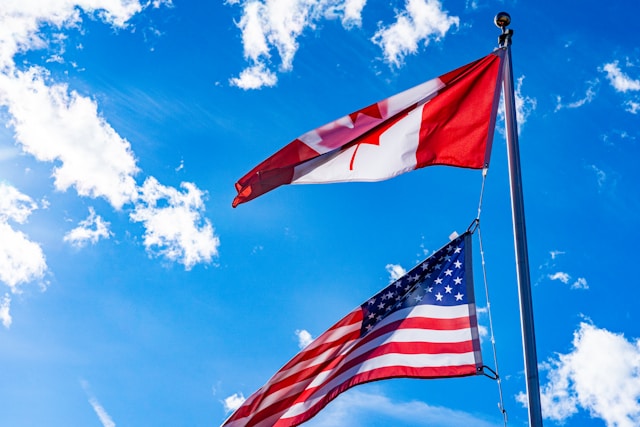Today, April 28, 2025, marks a significant moment for Canada as citizens across the nation participate in a federal election. This snap election, called amidst significant international trade pressures, pits the Liberal Party, led by Mark Carney, against the Conservative Party, helmed by Pierre Poilievre, in what recent polling suggests is a closely contested race. Millions have already cast their votes in advance polls, underscoring the perceived importance of this decision day.
The primary figures vying for leadership are Liberal Leader Mark Carney and Conservative Leader Pierre Poilievre. Carney, relatively new to elected office after winning the Liberal leadership in early March and becoming Prime Minister shortly thereafter, positions himself as a steady hand, drawing on his experience as Governor of the Bank of Canada and the Bank of England. His campaign narrative centres on navigating the complexities of the relationship with the United States under President Donald Trump. Poilievre, a seasoned politician representing the Ottawa riding of Carleton since 2004 and Conservative leader since 2022, campaigns on a platform of change, arguing against what he terms a “lost Liberal decade.” Other party leaders, including Jagmeet Singh of the NDP and Yves-François Blanchet of the Bloc Québécois, also campaign, though the national conversation has largely focused on the two front-runners.
The core event is the federal election itself, held today, April 28, 2025. The 36-day campaign unfolded against a backdrop of shifting political fortunes and significant external pressure, specifically a trade dispute initiated by U.S. President Donald Trump involving tariffs on Canadian goods. This external factor heavily influenced the campaign discourse, overshadowing initial Conservative polling leads built on domestic issues like affordability and crime. The campaign’s final days were also marked by tragedy following a deadly vehicle incident at a Vancouver street festival, prompting leaders to adjust their schedules. Despite this, final campaign pushes saw leaders targeting key regions, indicating confidence or perceived necessity in securing votes. The central question is who Canadians will choose to govern. Remember to VOTE NOW if you haven’t already.
Voting takes place across Canada today, with polling stations operating nationwide. Key battlegrounds identified by polling data include the populous provinces of Ontario and Quebec, along with British Columbia and Atlantic Canada. Leaders traversed the country, making stops in contested areas like Saskatoon, Edmonton, and the Greater Toronto Area, highlighting the geographical spread of the campaign effort. Results reporting will begin in the east, with the first counts expected from Newfoundland and Labrador shortly after 7 p.m. Eastern Time, progressing westward throughout the evening. Elections Canada oversees the administration of the vote, having already processed approximately 7.3 million advance ballots.
The impetus for this election, beyond the parliamentary timing, became heavily tied to the question of national leadership amidst international uncertainty. Carney argues for continuity and experienced management to counter U.S. trade actions, framing the election as a defence of Canadian sovereignty. Poilievre contends that domestic issues remain paramount and pitches his party as the necessary agent of change to address concerns like housing and public safety, arguing these problems predate and will outlast the current U.S. administration. For voters, the decision rests on which leader and vision offers the best path forward. The democratic process relies on participation; ensure you VOTE NOW.
As polls close across the country, the mechanism of vote counting begins. Elections Canada officials will tally ballots throughout the evening. Results will emerge sequentially by time zone, starting with Atlantic Canada after 7 p.m. ET, followed by Central Canada, including Ontario and Quebec, after 9:30 p.m. ET, and concluding with British Columbia and Yukon around 10 p.m. ET. The outcome remains uncertain, despite polling trends favouring the Liberals to win the most seats. The final tally will determine whether Canada faces a majority or minority government, shaping the political landscape for the coming years.
The culmination of this intense 36-day campaign rests on the choices made by individual Canadians today. The narrative shifted dramatically from domestic concerns to international relations, forcing leaders to adapt and voters to weigh competing priorities. Which vision prevails – Carney’s appeal for stability or Poilievre’s call for change – will become clear as the results unfold tonight. The only certainty is the fundamental role of the electorate in this democratic exercise.
References:
Canadians vote today after fierce campaign shaped by Trump

